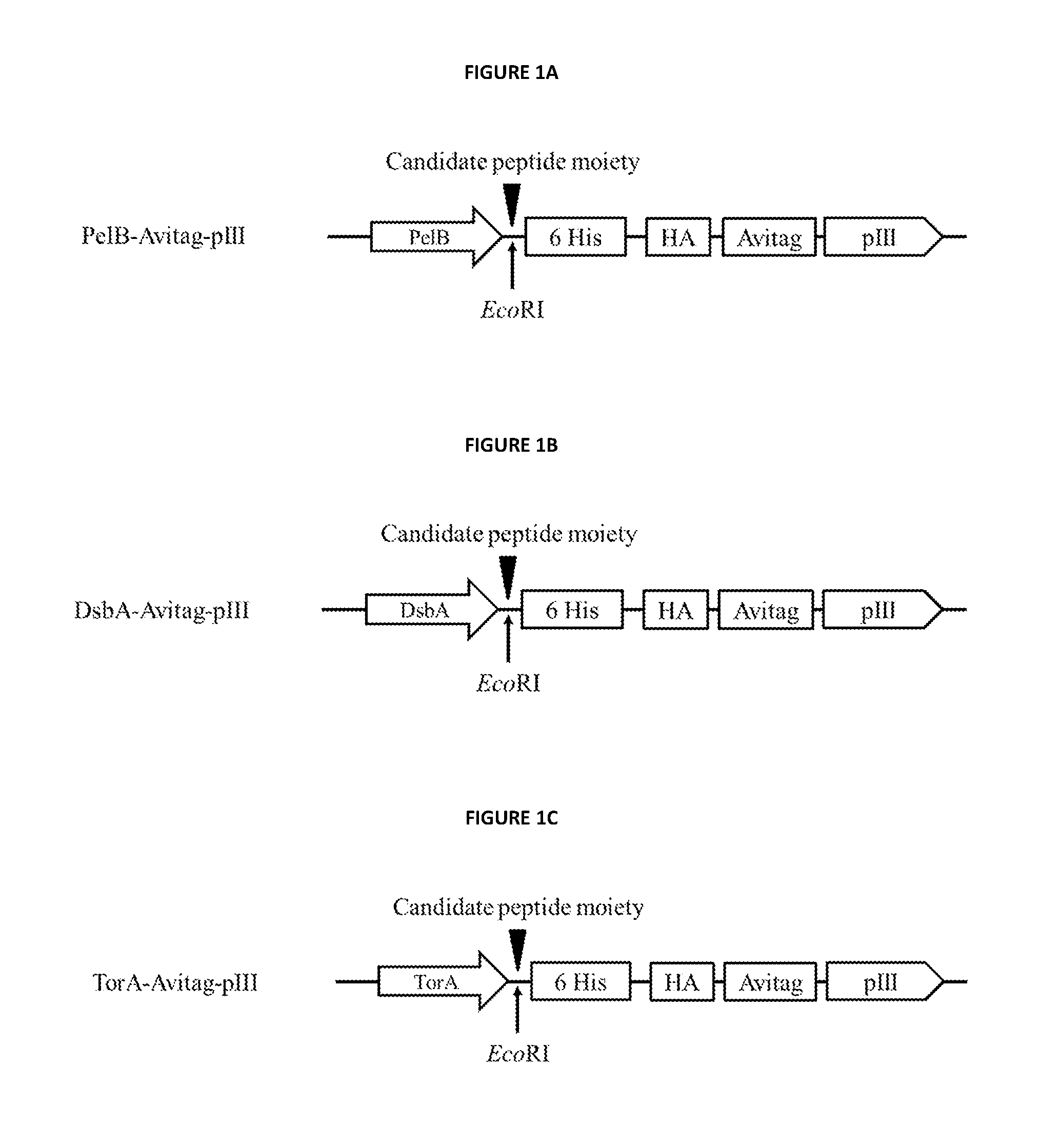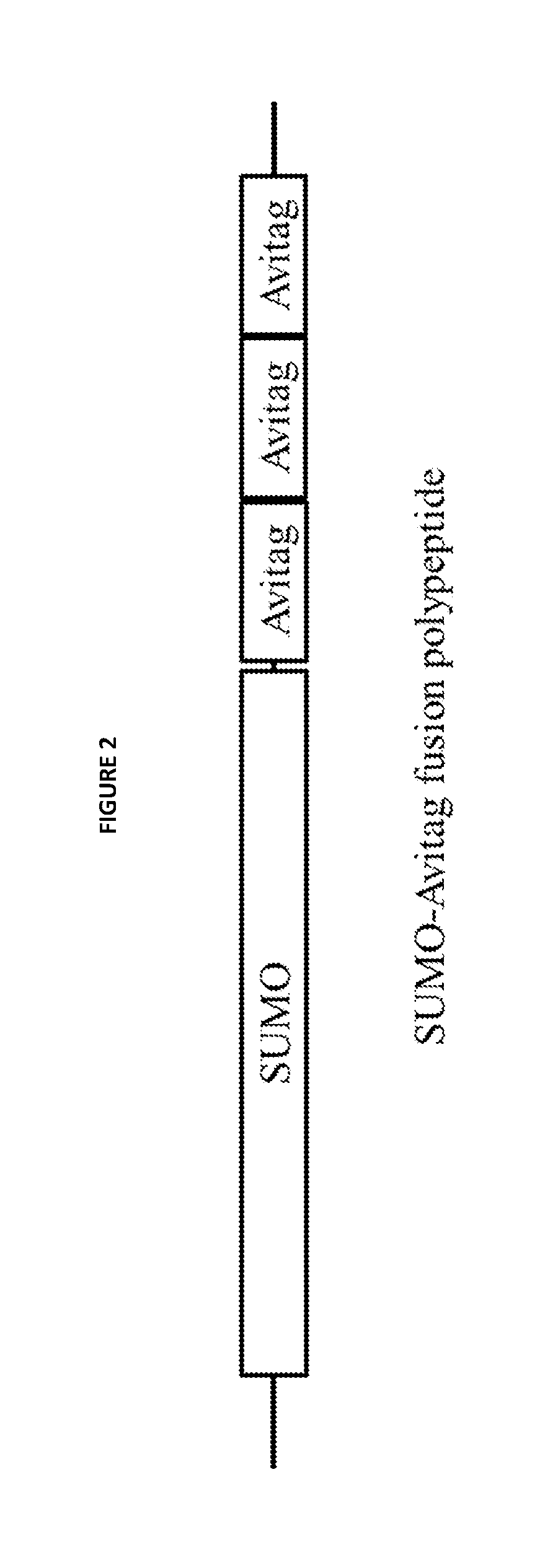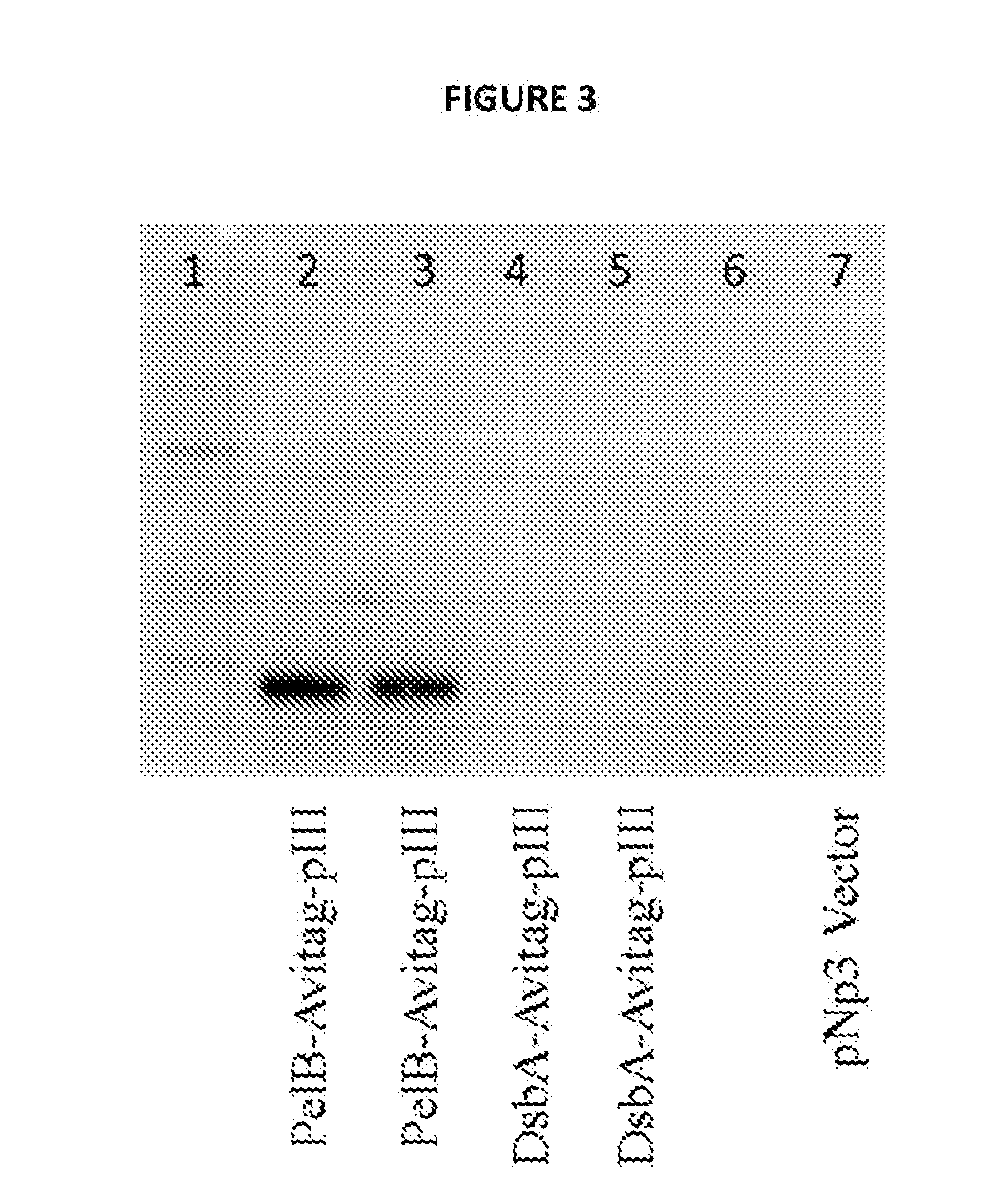Method of monitoring cellular trafficking of peptides
a peptide and cellular trafficking technology, applied in the field of pharmaceutical sciences, can solve the problems of limiting clinical application, cpps for drug cargo delivery is non-selectivity, and lack of similarity
- Summary
- Abstract
- Description
- Claims
- Application Information
AI Technical Summary
Benefits of technology
Problems solved by technology
Method used
Image
Examples
example 1
Production of a Candidate Peptide Moiety
[0302]This example demonstrates the production of a candidate peptide moiety such as a peptide library e.g., a bacteriophage display library or other peptide display scaffold, using nucleic acid encoding candidate peptides.
[0303]A highly diverse mixture of nucleic acids encoding candidate peptides was produced from coding and non-coding regions of bacterial genomes and eukaryotes having compact genomes, essentially as described in U.S. Pat. No. 7,270,969, and subject to the variations in the choice of source genomes as described herein below, and in the vectors employed for expression of peptides encoded by the nucleic acids as described in the following examples. The contents of U.S. Pat. No. 7,270,969 are incorporated herein by reference in their entirety.
[0304]Briefly, nucleic acid was isolated from the following bacterial and archaea species:
1Acinetobacter baumannii [ATCC_17978; uid58731]2Aeromonas hydrophila [ATCC_7966; uid58617]3Aeropyru...
example 2
Production of a Non-Biotinylated Member Using Expression Vector pNp3
[0308]This example demonstrates the production of a non-biotinylated member employing expression vector pNp3 or derivative thereof to produce a filamentous bacteriophage displaying the non-biotinylated member.
[0309]Vector construct designated, pNp3 is an M13 vector comprising nucleic acid encoding a fusion protein comprising a hexahistidine (6 His) tag, hemagglutinin (HA) tag, a biotin ligase substrate domain and M13 pIII coat protein. The vector pNp3 was modified to express fusion proteins comprising candidate peptide moieties fused in-frame to the 15-amino acid biotin ligase substrate domain having the amino acid sequence set forth in SEQ ID NO: 4, as shown in FIGS. 1a, 1b and 1c. Fusion proteins produced using pNp3 are subsequent displayed on a scaffold comprising the filamentous bacteriophage M13.
[0310]FIG. 1a shows the encoded pIII fusion protein of the pNp3 derivative vector PelB-Avitag-pIII, which comprises t...
example 3
Production of a Non-Biotinylated Member Using Expression Vector pNp8
[0325]This example demonstrates the production of a non-biotinylated member employing expression vector pNp8 or derivative thereof to produce a filamentous bacteriophage displaying the non-biotinylated member.
[0326]Vector construct designated, pNp8 is an M13 vector comprising nucleic acid encoding a fusion protein comprising a hexahistidine (10 His) tag, hemagglutinin (HA) tag, a biotin ligase substrate domain and M13 pVIII coat protein. The vector pNp8 was modified to express fusion proteins comprising candidate peptide moieties fused in-frame to the 15-amino acid biotin ligase substrate domain having the amino acid sequence set forth in SEQ ID NO: 4, as shown in FIGS. 4a, and 4b. Fusion proteins produced using pNp8 are subsequent displayed on a scaffold comprising the filamentous bacteriophage M13.
[0327]FIG. 4a shows the encoded pVIII fusion protein of the pNp8 derivative vector PelB-Avitag-pVIII, which comprises ...
PUM
| Property | Measurement | Unit |
|---|---|---|
| time | aaaaa | aaaaa |
| affinity | aaaaa | aaaaa |
| fluorescence | aaaaa | aaaaa |
Abstract
Description
Claims
Application Information
 Login to View More
Login to View More - R&D
- Intellectual Property
- Life Sciences
- Materials
- Tech Scout
- Unparalleled Data Quality
- Higher Quality Content
- 60% Fewer Hallucinations
Browse by: Latest US Patents, China's latest patents, Technical Efficacy Thesaurus, Application Domain, Technology Topic, Popular Technical Reports.
© 2025 PatSnap. All rights reserved.Legal|Privacy policy|Modern Slavery Act Transparency Statement|Sitemap|About US| Contact US: help@patsnap.com



